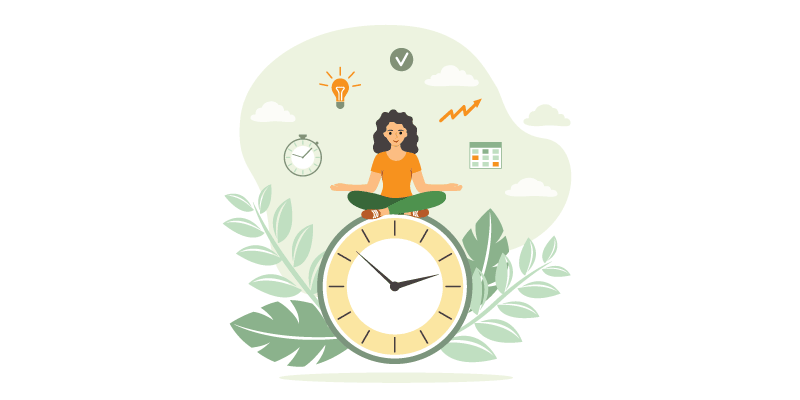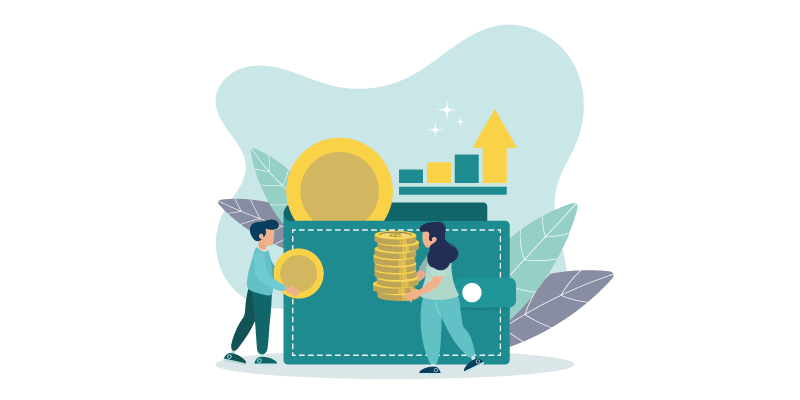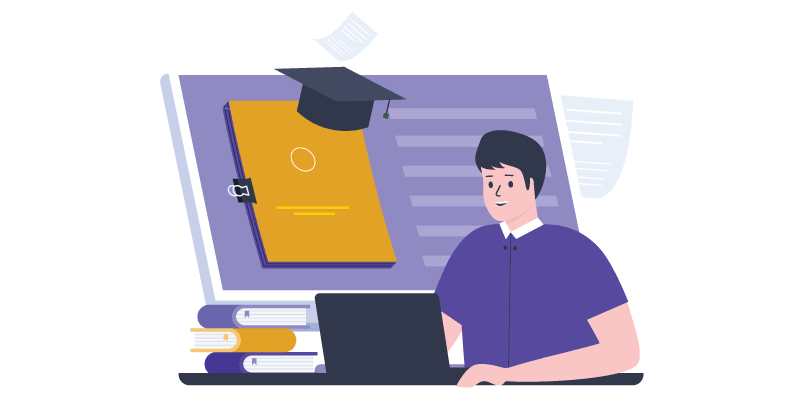In the fast-paced and interconnected world, we live in, multitasking and time management skills have become increasingly crucial for success in various aspects of life. The ability to handle multiple tasks simultaneously while effectively managing time can significantly impact productivity, efficiency, and overall well-being.
This article delves into the significance of multitasking and time management, exploring valuable strategies that can help individuals enhance these essential skills.
The Truth About Multitasking
In today’s fast-paced world, multitasking has become a common approach to handling multiple tasks simultaneously. It is often seen as a way to boost productivity and efficiency. However, the truth about multitasking might surprise you. While it may seem like a superpower to juggle various tasks at once, research suggests that multitasking might not be as effective as it seems.
According to Christine Rosen in her article “The Myth of Multitasking,” multitasking is more accurately described as task-switching. She points out that the human brain is not designed to handle multiple tasks simultaneously, and what we perceive as multitasking is actually our brain rapidly shifting attention from one task to another. This constant switching leads to reduced focus and diminished performance.
Rosen’s research indicates that multitasking can also result in increased errors and lower-quality work. With divided attention, individuals are more likely to make mistakes in the tasks they are trying to handle simultaneously. Moreover, studies have shown that multitasking can have a negative impact on memory retention, making it less likely for information processed during multitasking to be stored effectively.
Another consequence of multitasking, as highlighted by Rosen, is heightened stress levels. Trying to manage multiple tasks at once can lead to a continuous switching of gears in our brains, leading to a sense of overwhelm and increased stress.
Furthermore, multitasking can impair our ability to make sound decisions. Important choices require focused attention and thoughtful consideration, which can be compromised when we attempt to handle too many things at once.
Understanding Time Management
Mastering time management profoundly impacts productivity and overall well-being. Efficiently managing time allows us to maximize each day, complete tasks promptly, and reduce stress. Here are key points to improve time management skills:
- Set Clear Goals: Define short-term and long-term objectives for purposeful direction.
- Prioritize Tasks: Focus on important and urgent tasks to avoid feeling overwhelmed.
- Create a To-Do List: Stay organized and ensure nothing is forgotten.
- Use Time Blocking: Allocate specific time blocks for focused work.
- Avoid Multitasking: Concentrate on one task at a time for better results.
- Learn to Say No: Avoid overcommitment by declining additional tasks.
- Take Breaks: Refresh your mind and improve concentration.
- Eliminate Time-Wasting Activities: Minimize distractions and unproductive habits.
- Delegate Tasks: Free up time by assigning responsibilities to others.
- Use Productivity Tools: Explore apps to stay organized and track progress.
- Analyze and Adjust: Evaluate strategies periodically and make necessary changes.
- Be Realistic: Set achievable goals to prevent burnout.
- Minimize Procrastination: Overcome tendencies by taking small, manageable steps.
- Learn to Focus: Train yourself to stay attentive and mindful during tasks.
- Celebrate Achievements: Boost motivation and confidence by acknowledging accomplishments.
Remember, effective time management is a gradual process that requires consistent effort and self-discipline. Find what works best for you, make it a habit, and lead a more balanced and fulfilling life.
The Benefits of Effective Multitasking
1. Improved Productivity
Multitasking, when done effectively, can lead to improved productivity. By efficiently handling multiple tasks, you can accomplish more in a shorter amount of time. When you strategically switch between tasks, you maintain momentum and avoid wasting time on unproductive activities. This increased productivity allows you to tackle various responsibilities and meet deadlines with greater ease.
2. Enhanced Focus and Concentration
Contrary to the negative aspects of multitasking discussed earlier, effective multitasking can actually enhance focus and concentration. When you multitask mindfully, you direct your attention to tasks that complement each other or require different levels of mental effort. This dynamic task-switching keeps your mind engaged and prevents boredom or burnout that may occur with extended focus on a single task.
3. Time Savings
One of the significant benefits of multitasking is time savings. By efficiently combining tasks, you can maximize each moment throughout the day. For instance, you can listen to informative podcasts while commuting or exercise during breaks, optimizing your time for personal growth and well-being. When you save time on small activities, you create more opportunities to invest in meaningful experiences or tackle additional tasks.
Remember that effective multitasking requires planning and organization. It’s essential to prioritize tasks and ensure they are compatible for simultaneous completion. Multitasking can be a valuable tool in your time management arsenal, allowing you to make the most of your day and accomplish various objectives efficiently. Keep in mind that not all tasks are suitable for multitasking, so choose wisely to maximize the benefits.
The Downside of Multitasking
1. Reduced Quality of Work
Although multitasking may appear efficient for handling multiple tasks, it often leads to a decrease in the overall quality of work. When your attention is divided among various activities, you may not be able to give each task the focus and dedication it deserves. As a result, errors and mistakes can occur, leading to subpar outcomes. The lack of thoroughness in multitasking can be detrimental, especially in tasks that require precision and accuracy.
2. Increased Stress and Burnout
Multitasking can significantly contribute to heightened stress and burnout. Trying to juggle multiple tasks simultaneously overwhelms the brain, leading to increased stress levels. As the pressure to perform builds up, feelings of burnout and exhaustion can arise. Constantly switching between tasks can leave you mentally drained and less equipped to handle the demands of daily life.
3. Impaired Decision-Making
When multitasking, your ability to make sound decisions can be impaired. Important choices often require undivided attention and careful consideration. However, multitasking disperses your focus, making it challenging to thoroughly analyze and weigh the consequences of each decision. This can lead to hasty or less-informed choices, which may have negative repercussions in the long run.
It is essential to recognize the downsides of multitasking and be mindful of its potential negative effects. While it may be tempting to tackle multiple tasks at once, consider the trade-offs in terms of quality, well-being, and decision-making. By incorporating efficient time management strategies, prioritizing tasks, and concentrating on one task at a time, you can achieve improved outcomes and a more balanced approach to productivity. Remember, quality work and personal well-being should always take precedence over trying to do it all at once.
Tips for Successful Multitasking
1. Prioritize Tasks
To excel in multitasking, prioritize your tasks by identifying the most important and time-sensitive ones that require immediate attention. Rank your to-do list based on urgency and significance, allowing you to address essential responsibilities promptly and effectively by focusing on high-priority tasks first.
2. Use Time Blocking
Time blocking is a valuable technique to enhance multitasking efficiency. Allocate specific time blocks for different tasks throughout your day. By dedicating uninterrupted periods to each activity, you eliminate the urge to constantly switch between tasks. This allows you to maintain better focus and productivity as you give your undivided attention to each task during its designated time slot.
3. Avoid Task Switching
Minimize task switching as much as possible. Constantly jumping between tasks can lead to decreased concentration and increased mental fatigue. Whenever feasible, complete one task before moving on to the next. This way, you can fully immerse yourself in each activity, leading to better quality work and reduced stress.
4. Set Realistic Goals
When multitasking, set realistic goals for each task, considering your time constraints and capabilities. Avoid setting unattainable objectives to prevent frustration and overwhelm. Instead, break larger tasks into smaller, manageable steps, and celebrate your achievements as you progress. This approach will maintain your motivation and focus, leading to successful multitasking endeavors.
5. Stay Organized
Staying organized is vital for effective multitasking. Keep your workspace tidy and clutter-free to minimize distractions. Utilize digital tools or traditional planners to keep track of your tasks, deadlines, and appointments. Being organized allows you to navigate smoothly between tasks and prevents you from feeling overwhelmed by a chaotic environment.
6. Delegate When Possible
Recognize that not all tasks demand your personal attention. Whenever possible, delegate certain responsibilities to colleagues or team members. Effective delegation frees up your time for more critical or specialized activities, enhancing your multitasking abilities.
7. Take Breaks
Although multitasking can be rewarding, remember to take breaks to recharge both your mind and body. Continuous multitasking without breaks can lead to burnout and reduced efficiency. Utilize short breaks to relax, stretch, or take a brief walk. Taking care of yourself will improve your overall well-being and ensure you can sustain peak performance while multitasking.
The Role of Technology in Time Management

1. Productivity Apps and Tools
In today’s fast-paced world, technology plays a significant role in enhancing time management skills. Productivity apps and tools have become indispensable for individuals seeking to optimize their multitasking abilities. These apps offer a wide range of features designed to streamline tasks, organize schedules, and boost efficiency.
One example of a popular productivity app is Todoist. This app allows you to create task lists, set deadlines, and even prioritize tasks based on urgency. With its user-friendly interface and seamless integration across devices, Todoist helps you stay on top of your to-do list and ensure that no important task slips through the cracks.
Another valuable productivity tool is Trello. Trello uses a visual board system, making it easy to organize projects and collaborate with team members. By creating boards, lists, and cards, you can break down complex projects into manageable tasks and track progress effortlessly. Trello’s versatility and adaptability make it a go-to choice for individuals and teams alike.
Check out the best productivity tools here:
15 Best productivity tools of this year
2. Time Tracking Software
Time tracking software has revolutionized the way we manage our time and work hours. These tools enable you to monitor how much time you spend on various tasks and activities, providing valuable insights into your daily routines and habits. With accurate time tracking, you can identify areas where you may be spending too much time and make adjustments to enhance productivity.
One notable time tracking software is Toggl. Toggl allows you to create timers for different tasks, providing real-time data on how long you spend on each activity. This information helps you identify patterns and analyze your work habits. By understanding where your time goes, you can make informed decisions on how to optimize your daily schedule for maximum efficiency.
3. Calendar Management
Calendar management apps have become essential tools for keeping your schedule organized and on track. Gone are the days of traditional paper planners; digital calendars offer a wide range of features that cater to your time management needs.
Google Calendar stands as a popular and dependable calendar management app. Its intuitive interface and smooth integration with other Google services enable scheduling events, setting reminders, and inviting others to meetings or appointments. Moreover, users can create multiple calendars for different aspects of life, ensuring a clear and well-structured schedule.
Time management technology continues to evolve, offering innovative solutions to help individuals and professionals achieve better results in their daily tasks. By harnessing the power of productivity apps, time tracking software, and calendar management tools, you can take control of your time and make the most out of each day. Embracing these technological advancements can lead to improved productivity, reduced stress, and a greater sense of accomplishment in both your personal and professional life.
Developing Time Management Skills
1. Identify Time Wasters
To become a time management expert, begin by identifying and eradicating time-wasting activities from your daily routine. These may encompass activities that don’t significantly contribute to your life or goals, such as excessive social media usage, aimless web browsing, or indulging in non-essential tasks.
Start by maintaining a log of your daily activities for a week. Analyze the time spent on each task and evaluate if it aligns with your priorities. Observe patterns that lead to time wastage. Once identified, take proactive measures to reduce or eliminate these time wasters.
2. Learn to Say No
Learning to say no is a crucial skill in time management. Many people find themselves overwhelmed with commitments because they struggle to decline additional tasks or requests from others. However, saying yes to everything can lead to overextension and burnout, ultimately hindering your productivity.
Understand that your time and energy are valuable resources. Before accepting new tasks or obligations, evaluate whether they align with your priorities and long-term goals. Politely decline requests that don’t contribute to your personal or professional development, and focus on tasks that truly matter.
3. Develop a Routine
Developing a daily routine can greatly enhance your time management abilities. A well-structured schedule enables you to allocate dedicated time blocks for various tasks and activities, minimizing the chances of procrastination and distractions.
Begin by compiling a list of crucial tasks and activities you must complete each day. Then, assign specific time slots for each item on your list. Be realistic about the time required for each task and include short breaks to recharge your focus. Maintain your routine consistently to cultivate positive habits and boost overall efficiency.
4. Manage Procrastination
Procrastination often hinders effective time management. It’s crucial to identify its signs and develop strategies to overcome them.
When you notice procrastination creeping in, employ the “two-minute rule.” If a task takes less than two minutes to finish, do it right away instead of postponing it. For more complex tasks, break them down into smaller, manageable steps and focus on completing one step at a time.
To stay focused during work sessions, minimize distractions by disabling notifications or dedicating specific periods for uninterrupted work. Additionally, reward yourself when you complete tasks on time, reinforcing productive behavior.
Balancing Multitasking and Focus
1. Knowing When to Multitask
Multitasking can be a valuable tool when used judiciously. There are specific situations where multitasking can be effective and enhance productivity. Here are some scenarios where multitasking might be appropriate:
- Routine and Familiar Tasks: For routine and straightforward tasks that don’t require much mental effort, multitasking can be efficient. For instance, you can listen to a podcast while doing household chores.
- Waiting Times: Multitasking can be useful during waiting periods. For example, you can respond to emails or make phone calls while waiting for public transportation.
- Combining Physical and Mental Tasks: Pairing a physical task with a mental one can often work well. For instance, brainstorming ideas during a walk or taking notes while attending a meeting.
- Reviewing Information: Multitasking can be appropriate when reviewing material that you already understand. For example, skimming through presentation slides while listening to a lecture you are familiar with.
2. The Power of Single-Tasking
While multitasking has its merits, there are significant benefits to adopting single-tasking too. Concentrating on one task at a time enables you to give your undivided attention and energy to that specific activity. Here are some advantages of single-tasking:
- Enhanced Concentration: Single-tasking improves concentration and enables you to delve deeper into a task. This leads to better understanding and improved results.
- Reduced Errors: By focusing solely on one task, you can minimize mistakes and produce higher-quality work.
- Increased Efficiency: Single-tasking helps you complete tasks more efficiently by eliminating distractions and interruptions.
- Less Stress: Juggling multiple tasks can be overwhelming and stressful. Single-tasking promotes a sense of calm and reduces the feeling of being pulled in different directions.
- Better Memory Retention: When you focus on one task at a time, your brain can better encode and retain information related to that task.
- Improved Problem-Solving: Dealing with complex challenges often requires undivided attention and critical thinking, which single-tasking facilitates.
Strategies for Improving Focus
1. Mindfulness and Meditation
Practicing mindfulness and meditation can significantly improve your focus and concentration. These techniques train your mind to stay present at the moment and reduce distractions. Here’s how you can incorporate mindfulness and meditation into your daily routine:
- Mindful Breathing: Set aside a few moments each day to focus on your breath. Pay attention to the sensations of each inhale and exhale. When your mind drifts, gently bring your focus back to your breath.
- Body Scan Meditation: Practice bringing awareness to different parts of your body progressively. This helps release tension and brings your attention to the present moment.
- Mindful Observance: Engage in daily activities mindfully. Whether it’s eating, walking, or working, fully immerse yourself in the experience without judgment or distraction.
2. Creating a Distraction-Free Environment
To improve focus, it’s essential to create an environment that minimizes distractions. Here are some tips to achieve a distraction-free workspace:
- Declutter Your Space: Keep your workspace clean and organized. Clutter can lead to mental clutter and decreased focus.
- Turn Off Notifications: Disable unnecessary notifications on your devices to avoid constant interruptions.
- Set Boundaries: Communicate with family, friends, or colleagues about your work hours, so they know when not to disturb you.
- Noise Management: If possible, find a quiet place to work. Alternatively, use noise-canceling headphones to block out distractions.
- Designated Workspace: Have a specific area dedicated to work or study. This signals to your brain that it’s time to focus.
3. Utilizing the Pomodoro Technique
The Pomodoro Technique is a time management method that enhances focus and productivity. Here’s how it works:
- Set a Timer: Choose a task and set a timer for 25 minutes (this is called one “Pomodoro”).
- Work Intensely: Focus solely on the task at hand during the 25 minutes, avoiding any distractions.
- Take a Short Break: After each Pomodoro, take a 5-minute break to rest your mind.
- Repeat and Rest: After completing four Pomodoros, take a more extended break of 15-30 minutes.
Imagine you have a report to write. You decide to use the Pomodoro Technique. During the 25 minutes, you concentrate solely on writing, avoiding checking emails or social media. Once the timer goes off, you take a quick 5-minute break to stretch or get a drink. After completing four Pomodoros, you reward yourself with a longer 30-minute break to recharge.
Overcoming Challenges in Multitasking
1. Dealing with Overwhelm
Multitasking can quickly lead to feelings of overwhelm as you juggle multiple tasks at once. To tackle this challenge, consider the following strategies:
- Prioritize Tasks: Identify the most critical tasks and tackle them first. Breaking down your to-do list into smaller, manageable tasks can make overwhelming projects seem more achievable.
- Set Realistic Expectations: Be honest with yourself about what you can realistically accomplish. Avoid taking on more tasks than you can handle in a given timeframe.
- Practice Time Management: Use techniques like the Pomodoro Technique (mentioned earlier) to work in focused intervals, followed by short breaks. This method can help you stay organized and reduce overwhelm.
- Ask for Help: Don’t hesitate to delegate tasks when possible. If you have colleagues or team members who can assist, distribute the workload to avoid feeling overwhelmed.
2. Handling Interruptions
Interruptions can disrupt your multitasking efforts and hinder productivity. Here’s how to handle them effectively:
- Create a Dedicated Workspace: Establish a designated workspace where you can minimize interruptions. Inform others that when you’re in this space, you need focused time to work.
- Set Boundaries: Politely communicate your work hours to family, friends, and coworkers. Ask them to respect these boundaries and avoid unnecessary interruptions during these times.
- Use “Do Not Disturb” Mode: Utilize the “Do Not Disturb” feature on your phone or computer to silence notifications during critical work periods.
- Schedule Breaks for Interaction: Allocate specific times for socializing or responding to non-urgent messages. This way, you can stay connected without derailing your multitasking efforts.
Avoiding Multitasking Traps
While multitasking may seem tempting, it can lead to reduced productivity and lower-quality work. Avoid these common multitasking traps:
- Task Switching: Jumping between tasks can slow you down and decrease your focus. Instead, complete one task before moving on to the next.
- Constant Email Checking: Constantly checking your email can interrupt your flow and decrease productivity. Set specific times to review and respond to emails instead.
- Overlapping Similar Tasks: Trying to multitask similar tasks may cause you to confuse details or make errors. Focus on one task at a time to maintain accuracy.
- Multitasking During Important Conversations: Avoid multitasking while engaged in important conversations. Give your full attention to the person you are talking to, which shows respect and enhances communication.
Conclusion
In conclusion, multitasking and time management are essential skills that play a significant role in our personal and professional lives. While multitasking can be advantageous, it is crucial to approach it wisely and avoid overloading ourselves, as this may lead to decreased productivity and increased stress levels.
Instead, focusing on one task at a time and using techniques like prioritization, goal setting, and proper planning can lead to more effective multitasking and improved overall efficiency.
Time management allows us to take control of our time rather than letting it control us. By efficiently allocating time to different tasks, we can strike a balance, meet deadlines, reduce procrastination, and enhance the quality of our work.
Ultimately, developing both multitasking and time management skills will not only make us more competent and capable individuals but also lead to a more balanced and fulfilling life.














